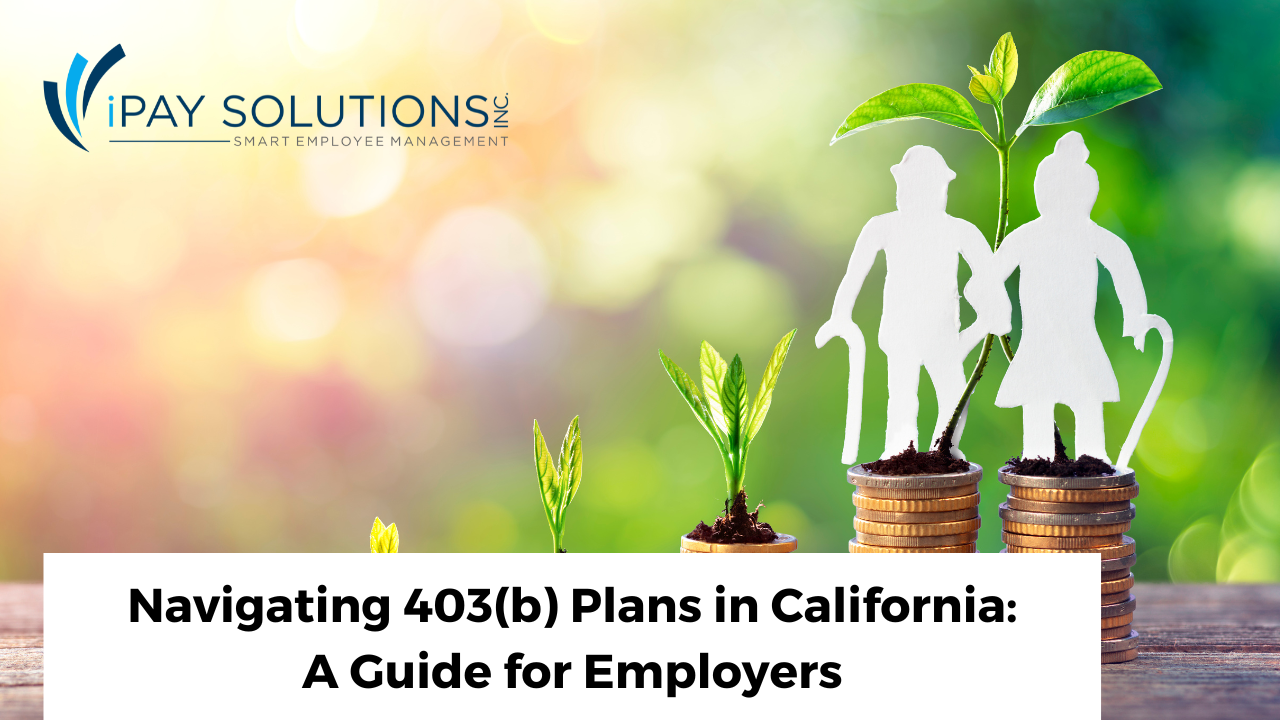Mastering 403(b) Plans in California: A Practical Guide for Employers
Offering competitive retirement benefits is crucial for businesses operating in California’s dynamic job market. One such benefit, the 403(b) plan, is a powerful tool that enables non-profit organizations, public schools, and other tax-exempt employers to help their employees save for retirement. Given California’s evolving labor laws and unique regulatory landscape, understanding the nuances of 403(b) plans is essential.
This guide will walk you through everything California employers need to know about 403(b) plans, their benefits, compliance considerations, and how to implement them effectively in your organization.
Understanding 403(b) Plans
A 403(b) plan is a tax-sheltered retirement savings plan specifically designed for employees of public schools, religious organizations, non-profits, and certain governmental entities. It allows employees to contribute a portion of their salary into an individual retirement account on a pre-tax basis, reducing their taxable income while securing their financial future.
Who Can Offer a 403(b) Plan in California?

Organizations eligible to provide a 403(b) plan in California include:
- Public school districts and charter schools
- Nonprofit organizations (501(c)(3) entities)
- Religious organizations
- Governmental organizations with qualifying employees
Many California-based educational institutions, healthcare providers, and non-profits utilize 403(b) plans to provide valuable retirement savings opportunities to their workforce.
Benefits of Offering a 403(b) Plan to California Employees
Providing a 403(b) plan can benefit both employers and employees, ensuring long-term financial security while enhancing workplace satisfaction.
For Employers:
- Tax Advantages: Contributions made to 403(b) plans may qualify for tax deductions, reducing an organization’s overall tax burden.
- Talent Attraction & Retention: With California’s high cost of living, a strong retirement benefits package helps attract and retain top talent.
- CalSavers Compliance: California mandates retirement savings plans for businesses with five or more employees. A 403(b) plan satisfies this requirement.
For Employees:
- Pre-Tax Contributions: Employees can reduce their taxable income while building their retirement savings.
- Tax-Deferred Growth: Investments grow tax-free until withdrawal in retirement.
- Catch-Up Contributions: Employees aged 50 and older can contribute additional funds beyond the standard limit.
Support your employees and streamline retirement benefits with expert guidance.
California-Specific Regulations and Compliance
California has unique laws that impact retirement plans, making compliance a top priority for employers. Key considerations include:
CalSavers and 403(b) Plans
California law requires employers with five or more employees to offer a retirement plan. Employers that do not offer a private plan, such as a 403(b), 401(k), or pension, must enroll employees in CalSavers, the state-sponsored retirement program.
If your organization already offers a 403(b) plan, you are exempt from the CalSavers requirement but must file for an exemption with the state. Failure to comply can result in penalties.
Key Differences: 403(b) Plans vs. CalSavers

Contribution Limits (2025)
The IRS sets annual contribution limits for 403(b) plans:
- Employee Contributions: $23,000 (for 2025)
- Catch-Up Contributions: An additional $7,500 for employees 50 and older
- Employer Contributions: Total combined contributions (employee + employer) cannot exceed $69,000
Employers should monitor contribution limits to ensure compliance and maximize benefits.
Fiduciary Responsibilities
California employers offering 403(b) plans must act as fiduciaries, ensuring:
- Plan fees are reasonable.
- Investment options are appropriate.
- Employees receive adequate education about their plan choices.
Failing to fulfill these responsibilities can lead to legal and financial consequences.
Designing and Implementing a 403(b) Plan

A well-designed 403(b) plan aligns with both employer and employee needs. Key steps include:
1. Selecting a Plan Provider
Choosing the right plan provider is crucial. Factors to consider:
- Investment options and performance
- Administrative fees and costs
- Compliance support and employee education resources
2. Structuring Employer Contributions
Employers can contribute in different ways:
- Matching Contributions: Matching employee contributions up to a certain percentage.
- Non-Elective Contributions: Providing a set percentage of an employee’s salary, regardless of participation.
3. Employee Enrollment and Education
- Provide clear, easy-to-understand resources about plan benefits.
- Host workshops and webinars to educate employees about saving strategies.
- Offer online tools and calculators to help employees plan for retirement.
Conclusion
Offering a 403(b) plan in California is a powerful way to support employees while benefiting from tax advantages and increased retention. However, compliance with both federal and state regulations is critical. Employers should work with trusted payroll providers and financial experts to ensure their plans are optimized and legally compliant.
If you need a seamless solution for payroll and benefits integration, iPay Solutions offers expert support to help California employers efficiently manage their 403(b) plans while ensuring compliance and ease of administration. Contact iPay Solutions today to learn how iPay Solutions can help manage your 403(b) plan efficiently while ensuring compliance and seamless payroll integration.


